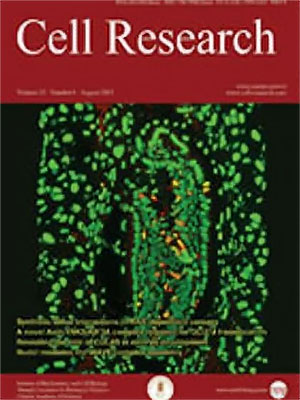Volume 11 Issue 4, December 2001: 301-310
ORIGINAL ARTICLES
Function of GATA transcription factors in hydroxyurea-induced HEL cells
ZHANG Shu Bing, Qi Ye HE, Hui ZHAO, Chang Yun GUI, Chu JIANG, Ruo Lan QIAN*
Institute of Biochemistry and Cell Biology, Shanghai Institutes for Biological Sciences, Chinese Academy of Sciences, 320 Yueyang Road, Shanghai 200031, China.
Correspondence:
HEL cells, a human erythroleukemia cell
line, mainly express the fetal (
g)globin gene and
trace amount of the embryonic (
varepsilon)globin gene, but not adult (
b)
globin gene. Here we show that hydroxyurea (HU) can induce HEL cells to express
adult (
b) globin gene and lead these cells to
terminal differentiation. Results showed in Gel mobility shift assays that GATA
factors could specifically bind to the regulatory elements of human
b-
globin gene, including the proximal regulatory element (the
b-
promoter) and the distal regulatory elements (the DNase I hypersensitive sites
in the LCR, HS2-HS4 core sequences). However, the DNA binding patterns of GATA
factors were quite different between HU-induced and uninduced HEL cells.
Western-blot analysis of nuclear extracts from both the uninduced and HU-
induced HEL cells revealed that the level of GATA-2 transcription factor
decreased, whereas the level of GATA-1 transcription factor increased following
the time of hydroxyurea induction. Furthermore, using RT-PCR analysis the
expression of human
b-globin gene in HU-induced HEL
cells could be blocked again when HEL cells were incubated in the presence of
antisense oligonucleotides for hGATA-1, suggesting that the upregulation of
hGATA-1 transcription factor might be critical for the expression of human
b-
globin gene in HU-induced HEL cells.
FULL TEXT | PDF
Browse 3113


